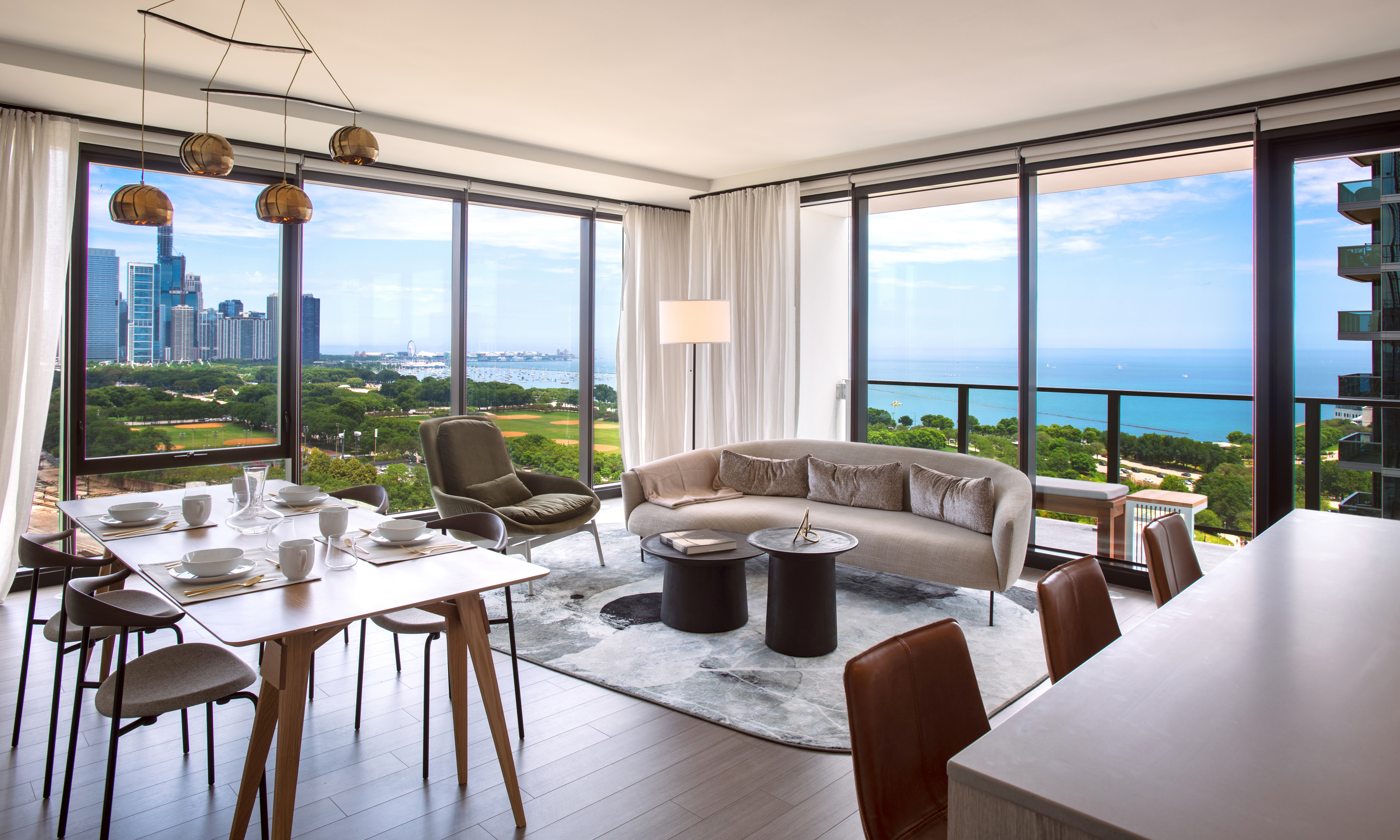In a typical year, as ice thaws and recedes during the spring, renters come out in droves to tour apartment buildings and sign new leases. But 2020 isn’t a normal year. As the pandemic blankets the streets with silence, leasing firms and their clients are turning more and more to virtual tours.
Even before the emergence of COVID-19, virtual tours were a practical tool, and growing in use. They provided another avenue for leasing teams to reach prospective tenants, who in turn were able to explore far more properties from their couch than they ever could via physically walking the property.
Current unfortunate events, however, dictate that almost no in-person tours are taking place—even if the need to rent hasn’t dissipated. Those firms that were early adopters of virtual touring are now better positioned to interact with clients.
Luxury Living Chicago Realty, for example, offers virtual tours for a number of its assignments, including River City in the South Loop, Wolf Point East in River North and Upshore Chapter in Uptown, among others. According to Aaron Galvin, Luxury Living Chicago’s CEO and founder, approximately 5 percent of their units have historically leased with no walk-through, which is only possible because of virtual touring. His team noticed significant site traffic over the past week once they started to heavily market the virtual tours.
“We’re really trying to balance the health and safety of our team and everybody else,” said Galvin. “We want to do our part to flatten the curve and also continue to lease apartments.”
When a prospective resident wants to virtually tour a Luxury Living Chicago listing, they first click into a schedule showing a calendar and contact form. Automated workflows explain the remote leasing process. An agent will then send out a pre-recorded showcase of amenity spaces and pre-selected units. Luxury Living Chicago partnered with Matterport and Realync to create video tour packages of their properties.
The client can then ask specific questions of an agent through a Google Hangouts video chat. If they want to know more about the views, layout and other details of a specific unit, an agent can provide that through a bespoke virtual tour of that residence.
“Our agents are pretty well versed in this, as they’re often leasing during pre-construction,” said Taylor Maggi, marketing manager at Crescent Heights. “Now, of course, the frequency of this has skyrocketed, because it’s our only alternative.”
Crescent Heights is the developer behind NEMA Chicago, the city’s tallest rental residence at 76 stories. The Rafael Viñoly-designed property has 800 units and Crescent Heights is also leveraging its virtual tour capabilities to reach potential tenants during the pandemic lock-down.
“We’re fortunate enough to be in the position that we are where we have this technology available to us,” Maggi said.
Eventually, once this health emergency scales back, people will once again come within six feet of one another, exchange handshakes and otherwise re-integrate back into society. But what of virtual tours? Will leasing agents and prospective tenants alike find greater use in this tool?
“The industry has been moving towards a combination of remote and self-guided touring already,” Galvin said. “There is going to be an opportunity to help people feel more comfortable, even prior to coming to the showing, because there’s going to be an adjustment period as we come back into society—hopefully sooner rather than later. And I think that these tools will be really helpful.”
According to Galvin, approximately 40 percent of Luxury Living Chicago’s traffic is from residents looking to relocate from out of state. For them, they need as many digital assets as they can possibly get. Even for prospects looking to move from mere blocks away, a virtual tour provides so much up-front information that any eventual walking tour feels like a second visit to the property.
“This comes back to the how the pandemic is shaping our consumer behavior in general,” said Maggi, pointing to the better-than-expected productivity that employers and employees are experiencing now that many more are working from home. That said, there’s nothing like actually being there.
“We’re capturing more and more content every day and building our arsenal of videos,” Maggi said. “But it’s still a big decision to pull the trigger and move, so I think that, generally, the comfort level will remain for site visits moving forward.”






